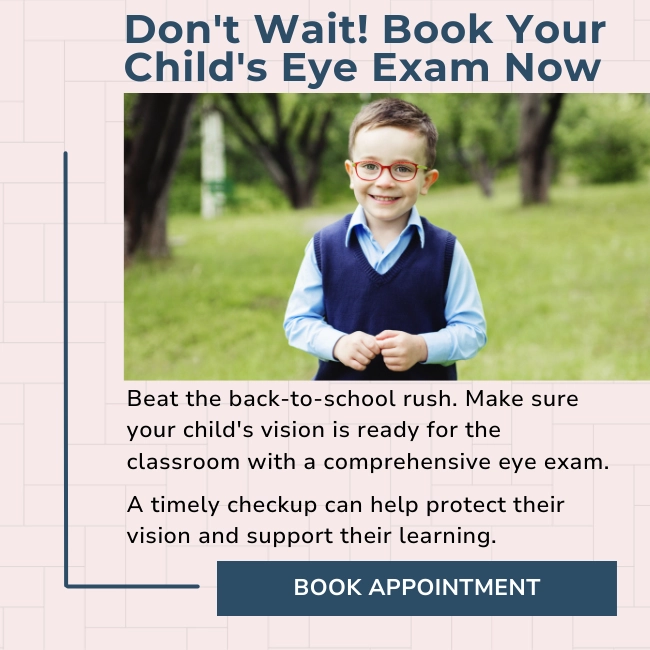Dry eye is a common condition that occurs when your eyes do not produce enough tears or when the quality of your tears is poor. While many people associate dry eye with symptoms such as irritation, burning, and redness, it can also cause blurred vision.
When you have dry eyes, your eyes may feel gritty or like there is something in them. This happens because, without enough tears, your eyes cannot properly lubricate and protect the delicate tissue on the surface of your eye. This can lead to irritation and inflammation, which can make your vision blurry. However, there are other potential causes of blurry vision, so visiting your eye doctor for a checkup is key in determining the cause.
How Does Dry Eye Cause Blurry Vision?
To understand how dry eye can cause blurry vision, it is important to first understand how tears work to keep your eyes healthy and your vision clear. Tears are made up of 3 layers: an oily layer, a watery layer, and a mucous layer.
Each of these components plays an important role in keeping your eyes lubricated and your vision clear. The oily layer helps prevent tears from evaporating too quickly, the watery layer provides moisture, and the mucous layer helps spread tears across the surface of your eye.
When you have dry eye, there is a disruption in this delicate balance of tear components. This can happen for various reasons, such as:
- Not producing enough tears
- Poor quality of tears due to dysfunction in glands or ducts responsible for producing and draining them
- Increased evaporation of tears due to environmental factors like dry air or wind
Symptoms of Dry Eye That Can Affect Your Vision
Symptoms of dry eye can go beyond the usual sensations of grittiness and burning. Dry eye can also affect your vision in the following ways:
- Blurred vision: This occurs when there is not enough moisture on the surface of your eyes, causing light to scatter instead of focusing properly.
- Sensitivity to light: A lack of adequate tears can lead to increased sensitivity to light, making it difficult to see clearly in brightly lit environments.
- Difficulty seeing at night: The mucous layer in your tears helps spread them across the surface of your eyes. Without this layer, your vision can become hazy and blurred, especially in low-light conditions.
- Fluctuations in vision: As dry eye symptoms can come and go, you may experience fluctuations in your vision throughout the day.
Treating Dry Eye to Improve Your Vision
If you are experiencing symptoms of dry eye that are affecting your vision, it is important to seek treatment from an eye care professional. They can help identify the underlying cause of your dry eyes and provide a personalized treatment plan.
Some common treatments for dry eye include:
- Artificial tears: These are over-the-counter eye drops that can help add moisture to your eyes and provide temporary relief from dry eye symptoms.
- Prescription eye drops: If artificial tears are not effective, your eye care professional may prescribe medicated eye drops to help reduce inflammation and increase tear production.
- Punctal plugs: These are tiny silicone or gel plugs that can be inserted into the tear ducts to slow down the drainage of tears, keeping them on the surface of the eyes for longer.
- Managing underlying conditions: If your dry eyes are caused by an underlying condition such as autoimmune disorders or hormonal changes, treating these conditions can also help improve your dry eye symptoms.
Advancements in technology have led to the development of new treatments, such as:
- Radiofrequency (RF): This treatment uses RF energy to stimulate collagen formation and reduce inflammation around the eyes, which can help improve tear production and reduce dry eye symptoms. It also helps in opening up clogged meibomian glands, allowing for improved tear secretion and reducing the appearance of wrinkles and other age-related eye area concerns.
- Intense Pulsed Light (IPL): This treatment targets ocular rosacea, meibomian gland dysfunction, and inflammatory dry eye by controlling the inflammatory process with flashes of light that stimulate the meibomian glands, reducing bacteria and inflammation. It can also improve the quality of oil in your tear film, which is crucial for maintaining eye moisture.
These innovative treatments offer noninvasive, efficient, and lasting solutions for patients whose symptoms are not adequately alleviated by traditional methods.
Combatting Dry Eye at Home
In addition to seeking treatment, there are some steps you can take at home to help manage dry eye and improve your vision:
- Blink frequently: Many people tend to blink less when using digital devices, leading to dry eyes. Make a conscious effort to blink frequently throughout the day to help keep your eyes lubricated.
- Take breaks from screen time: Give your eyes a break by taking frequent breaks from staring at screens. Every 20 minutes, look away from your screen and focus on something else for 20 seconds.
- Use a humidifier: Dry air can contribute to dry eye symptoms, especially during the winter months. Using a humidifier in your home or workplace can help add moisture to the air and reduce dryness.
- Avoid irritants: Some environmental factors such as wind, smoke, and air conditioning can worsen dry eye symptoms. Try to avoid these irritants as much as possible.
- Stay hydrated: Drinking enough water helps to keep your body and eyes hydrated. Aim for at least 8 glasses of water per day.
- Eat a balanced diet: Certain nutrients, such as omega-3 fatty acids, are important for eye health and can help improve dry eye symptoms. Incorporate foods like fish, nuts, and leafy greens into your diet.
When to See Your Eye Doctor
Always consult with your eye doctor before trying any new treatments or making significant lifestyle changes. They can help you determine the best course of action for managing your dry eyes and improving your overall eye health.
At Trail Vision Care Clinic, our team can provide personalized treatment plans for dry eye management. Contact us today to schedule an appointment and find relief from your dry eye symptoms.




